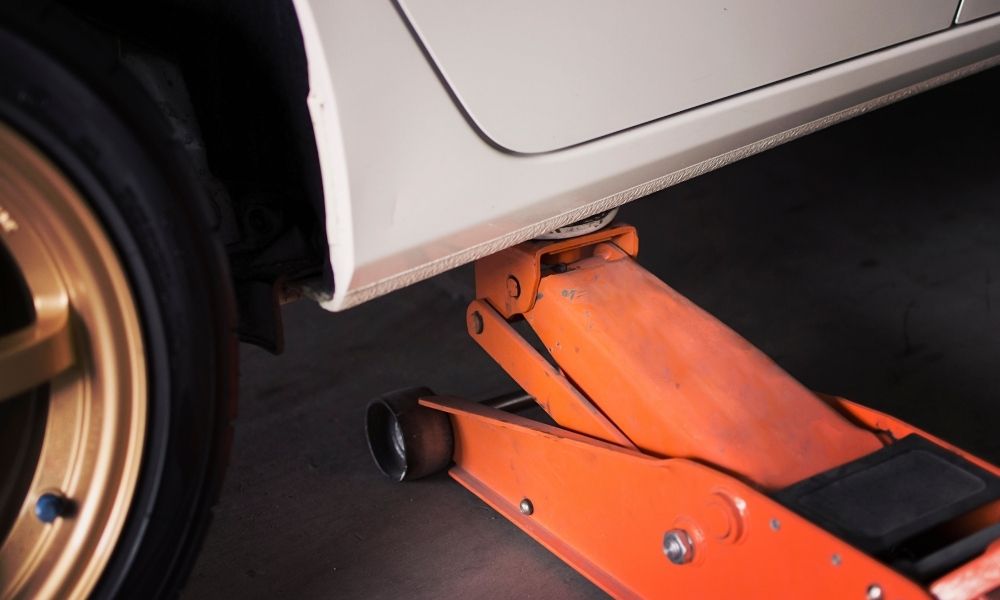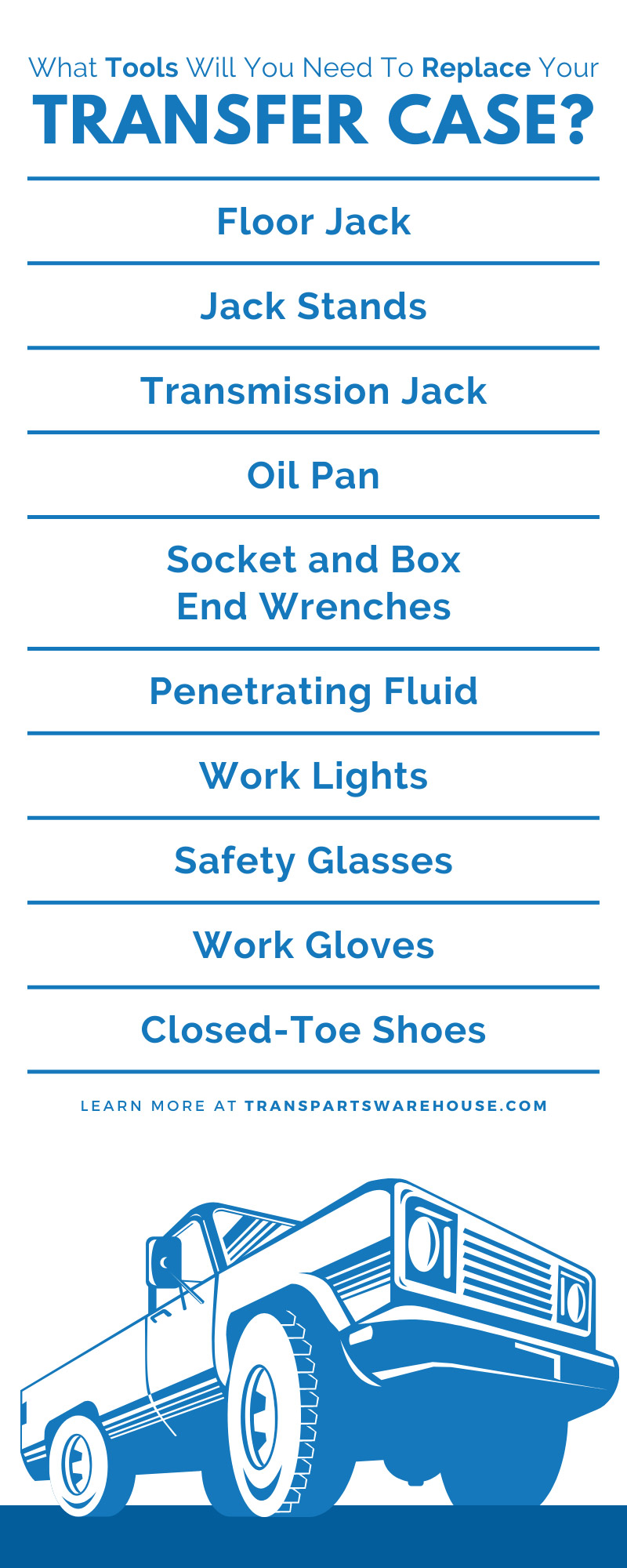
Even though transfer cases aren’t a part of every vehicle on the market, if you own a car that can do 4-wheel or all-wheel drive, the day might come when you’ll need to replace it. Of course, you can take your vehicle to a repair shop, but putting in a new one is much easier than you might think. If you’re looking to save some cash by doing this repair yourself, here’s a list of what tools you’ll need to replace your transfer case and simple steps to follow for doing it on your own.
Which Tools You’ll Need
If you’re serious about replacing the transfer case yourself, you’ll need to have all the following tools at your disposal. You might not end up using them all, but there’s a good chance you will. Regardless, it’s better to be safe than sorry. If you don’t have one of the larger items on this list, you’ll most likely be able to rent one from a local auto parts store, which will be much cheaper than buying one yourself.
Floor Jack
For those who don’t know, the transfer case connects directly to the transmission of the car, which means you’ll find yours underneath your vehicle. To get to it, you’ll need a way to lift your car up. Your best choice for lifting your vehicle up will be with a floor jack.
Jack Stands
Once you’ve pumped up your car to a high enough level that you can work under it, you’ll need to set up the jack stands. It’s very dangerous to leave the vehicle resting on the floor jack. These stands offer a more robust way to keep the car in the air. Typically, two of them will do that job, but some vehicles might require four to ensure it stays in place.
Transmission Jack
After the engine block, the transmission is the heaviest part of your vehicle. Replacing the transfer case almost always involves removing the entire transmission. Unless you have a few buddies that can help you safely lower it, you’ll need a transmission jack to get it down to the ground.
Oil Pan
Before removing the transfer case, you’ll likely need to take the fluid out of it. You’ll need an oil pan to collect this fluid so that you can put it back in when you finish up. This will help keep your garage floor clean.
Socket and Box End Wrenches
For most of the replacement process, you will need to use different sizes of socket wrenches to remove the various nuts and bolts that hold the transfer case and transmission up. You might need to use box end wrenches for tighter areas, especially those around the driveshaft. Most sockets take up too much room to fit into those spots.
Penetrating Fluid
Depending on the age of your car, there’s a good chance it has been a while since someone removed any of the bolts connected to the transmission. That means some of them might not want to come loose. When that happens, you’ll need a can of penetrating fluid on hand. Some people recommend spraying this stuff on all of the parts you plan on unscrewing, but you should be OK to only use it when you actually need it.
Work Lights
Even if you decide to go through this process outside in the middle of the day, you’ll probably need a work light or two. For one, you can’t count on the sun staying out all day. Also, you’ll be doing a majority of all this work under your car. Various parts might be difficult to see if you don’t have a light source shining directly on them. At the very least, you should bring a flashlight with you.
Safety Glasses
Of course, not all tools will be for your vehicle. Some will be for yourself, like a pair of safety goggles. Since you’ll be lying under the car, you need to protect your eyes. You never know when a drop of oil or a loose bolt will come falling toward your face.
Work Gloves
When working on your car’s internals, work gloves are also a good choice. Besides keeping your hands clean from all the dirt and grease that’s built up over the years, they could also protect you from minor cuts and bruises.
Closed-Toe Shoes
Just like with any other work you do on your car, you’ll also want to wear some closed-toe shoes to protect your feet from falling parts and tools. If you want to be extra cautious, you could wear some steel-toed boots instead, but those aren’t a requirement for this job.
Simple Replacement Process Steps
Now that you know what tools you’ll need to replace your transfer case, you’re probably wondering how you swap it out for a new one. Due to the nature of how manufacturers make their vehicles, no two cars are the same in this process. You’ll need to look up directions for your make and model. However, we can give you a basic rundown of the process so that you know what you’re getting yourself into.
As previously mentioned, you’ll need to start by raising up the front of your car with the floor jack and securing it with the jack stands. Once the vehicle is in place, you’ll need to empty out the transfer case’s fluids and put them to the side. After that, you can start removing all the bolts and parts connected to the transmission.
This is when you use the transmission jack to lower it to the ground and remove the transfer case from it. Once you’ve detached it, put on the new one and reverse the process to put everything back together.
Where You Should Buy Your New One
If you haven’t found a place to buy your new transfer case parts yet, look no further than Transparts Warehouse. We specialize in transmissions. We can provide anything you could possibly need for your transfer case. Take the time to shop through our entire catalog to find just the parts you’re looking for.


